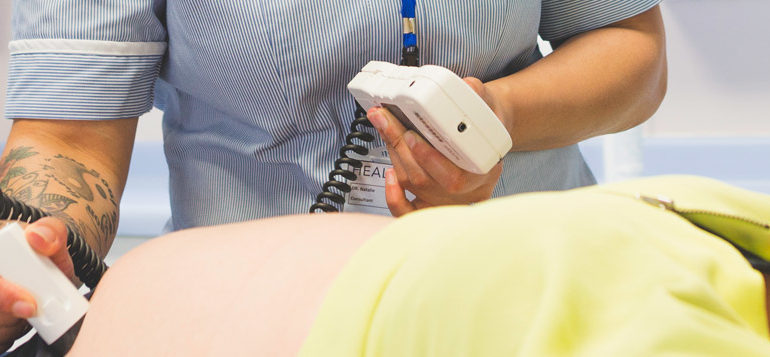PMCF for legacy devices and early MDR products
The Medical Device Regulation (MDR) 2017/745 has concretised the regulatory framework for medical devices compared to the partially unclear requirements in the MDD. A particular focus is placed on legacy devices and post-market clinical follow-up (PMCF). Legacy devices – medical devices that were on the market before the MDR or were lawfully placed on the market under previous regulations (e.g. the MDD), were often marketed under less stringent requirements. In particular, those products that received CE authorisation via the equivalence route are now the focus of particular attention, as important clinical parameters may not have been examined in detail. This situation means that the available data does not always meet today’s regulatory requirements and manufacturers are forced to take targeted measures to “improve” them.
Experience with legacy devices and PMCF
Past experience shows that the database for legacy devices is often insufficient to enable a complete assessment of clinical safety and performance. For medical devices in low risk classes, general PMCF measures such as continuous post-market surveillance, regular literature analyses and the collection of feedback from clinical practice are often sufficient to identify potential long-term effects and rare adverse events. However, a more intense approach is necessary for higher classified products, especially those approved via the equivalence route. Here, specific PMCF measures such as prospective clinical PMCF studies, the establishment of patient registries or targeted data collection in defined cohorts have been established as good solutions. These specific measures serve to record critical safety and performance parameters in detail and to close any gaps in the original data set.
Low class, low concern, high class, high concern?
The problem of insufficient data does not only occur depending on the risk class, but also varies depending on the size of the manufacturer. Larger companies often have more resources and an established infrastructure that enables them to access extensive clinical data. These manufacturers can often draw on existing studies and continuous monitoring programmes to supplement the database. Smaller companies, on the other hand, face the challenge of limited resources. In such cases, the use of collaborative studies or partnerships with hospitals and research organisations is often the most viable way to demonstrate clinical safety and performance when general PMCF measures are not sufficient.
There is no general answer to the question of how often the available data is insufficient, as this depends on the type of product, its risk profile and the original data set. However, it is clear that there is a frequent need for improvement, particularly in the case of legacy devices that have found their way onto the market via the equivalence route.
Early MDR-compliant medical devices and PMCFs
Medical devices that were certified during the transition phase from MDD to MDR (MDR-compliant medical devices from the first hour) often have only limited PMCF activities. This early certification under less stringent conditions (also due to the fact that both manufacturers and notified bodies first had to gain experience with the specific implementation of the MDR requirements) means that more effort is required to supplement clinical evidence in further planning.
For the future of these early MDR products, it is therefore crucial that manufacturers develop a comprehensive strategy to systematically close existing data gaps. This requires a thorough review of the original marketing authorisation documents and any clinical studies conducted, as well as a detailed gap analysis that specifically identifies what information is currently missing. This usually takes place as part of the clinical evaluation; the planning of short-term measures as well as long-term strategies for continuous data collection must be recorded in a PMCF plan. Establishing an intensive dialogue with the responsible regulatory authorities and notified bodies is of central importance here in order to clarify uncertainties at an early stage and develop interim solutions that meet the current requirements. A renewed risk assessment of the products is also necessary in order to take account of the changed findings and to supplement clinical evidence in a targeted manner. Ultimately, the success of these actions will be measured by whether patient safety and product performance can be guaranteed in the long term, which not only fulfils regulatory requirements, but also meets the high expectations of users and the well-being of patients.
The recommendations of Team NB
In the third revision of the Team NB Position Paper “Best Practice Guidance for the Submission of Technical Documentation under Annex II and III of Medical Device Regulation (EU) 2017/745”, the expectations of the notified bodies regarding PMCF data are clearly formulated in contrast to the previous revision. This begins with the selection of “Similar Devices” (The similar devices […] should align with those identified in the clinical evaluation, including the PMCF plan.), continues with the fact that all submissions must be accompanied by at least one PMCF plan and the streamlining of the CER update cycles.
The most common stumbling blocks identified by Team NB with regard to the PMCF are
- The PMCF plan does not contain all the elements required in Annex XIV Part B.
- The PMCF report is incomplete and lacks details on the status of activities.
- The PMCF plan does not clearly differentiate between general and specific PMCF activities and/or a justification is not provided for not performing specific PMCF, when appropriate.
- Significant changes to PMCF activities are not communicated to the notified body in advance of implementation.
Team NB also provides further insight into possible data sources:
- Registry studies systematically collect data on specific devices, often at a national level, to improve knowledge about safety and performance. These studies are based on real-world experience, but can be biased by retrospective data entry and compliance issues.
- High-quality surveys conducted at patient level must have clearly defined endpoints and the sample size must be statistically calculated. Adequate data analysis is critical. Manufacturers must carefully plan the number of surveys required as inadequate considerations can affect the quality of the data.
- If specific PMCF activities are not carried out in the EU, a justification is required. The objectives of the PMCF activities should be consistent with those of the clinical evaluation.
Overall, it is clear that the further development of legacy devices and early authorised MDR products is a multi-layered, continuous process. The combination of a detailed preliminary analysis, the use of differentiated PMCF measures and the concrete planning of these measures in a PMCF plan forms the basis for the sustainable success of these products. Manufacturers who consistently follow this path can meet the challenges of the MDR and pave the way for safe and high-performance medical devices in the future, and the seleon GmbH team can support you in this endeavour.
Please note that all details and listings are not intended to be exhaustive, are without guarantee and are for information purposes only.
┬Ā




